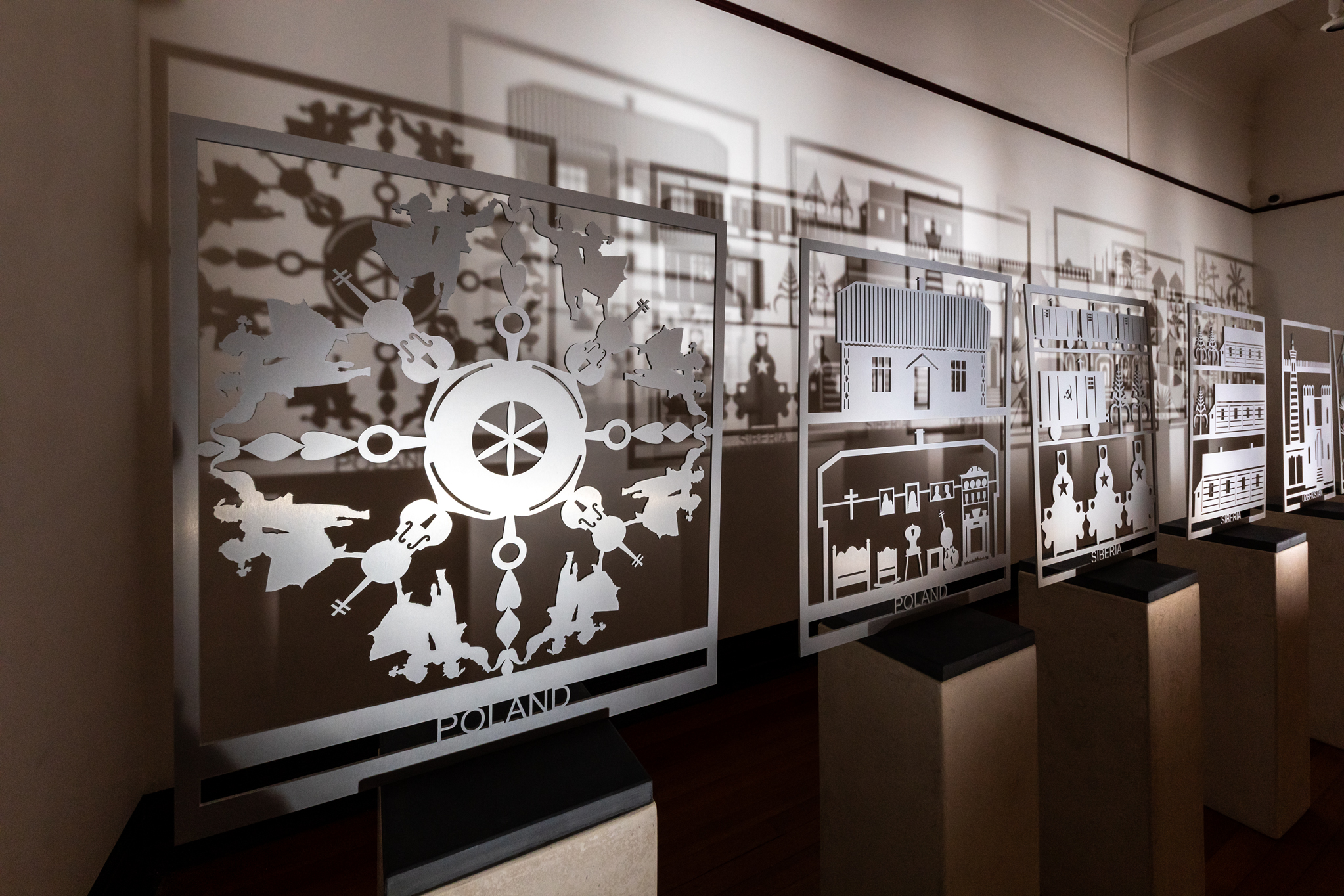
A haunting new art installation inspired by a Polish family’s extraordinary wartime odyssey across three continents will open on Thursday 25 May at the University of St Andrews’ Wardlaw Museum.
Somewhere to Stay features delicate, laser-cut aluminium panels – created by artist Diana Forster – telling the story of her mother’s ordeal, prompted by the Russian invasion of eastern Poland in 1940 during the Second World War.
 The ten free-standing sculptures trace an exodus that took thousands of displaced Poles through Russia, Iran, India and Africa – and then, eventually, to Britain. Panels capturing key stages on the journey are influenced by the traditional Polish craft of paper cutting called wycinanki and each panel is designed so that it casts ‘the long shadow of war’.
The ten free-standing sculptures trace an exodus that took thousands of displaced Poles through Russia, Iran, India and Africa – and then, eventually, to Britain. Panels capturing key stages on the journey are influenced by the traditional Polish craft of paper cutting called wycinanki and each panel is designed so that it casts ‘the long shadow of war’.
The installation is the first stage in rethinking the Wardlaw Museum’s garden area as an integral part of the museum.
Somewhere to Stay is an Imperial War Museum IWM 14-18 NOW Legacy Fund commission in partnership with University of St Andrews. The exhibition is part of the University’s Visualising War and Peace project, which seeks to shed fresh light on war’s many impacts – including the struggles faced by refugees who are displaced by conflict.
From September to November, additional works by the Oxford-based artist will be on display in the Wardlaw’s Research Studio. These 18 prints and a sculpture of ghostly white cabbages resting on spent rifle cartridge cases will complement the story told by the outdoor installation.
The artist’s mother and her family were among 1.7 million Poles forced from their homes by Stalin’s troops and transported to labour camps in Arkhangelsk and Siberia. Deportees were sent in cattle trucks with little food and water to logging camps where they were forced to work in temperatures as low as -40°C on a starvation diet.
Detainees were released 18 months later when Stalin switched sides in the war, joining the Allies. They travelled south to Polish Army recruitment centres in Uzbekistan, where abject conditions claimed the life of the artist’s grandfather.
The family then crossed the Caspian Sea to present-day Iran before heading east across mountains to India. They sailed from Karachi to Mombasa, settling in modern-day Tanzania until the end of the war, when they were sent to resettlement camps in the UK.
The first two panels of Somewhere to Stay depict a peaceful life before deportation, while successive pieces illustrate where the Polish deportees stayed in transit. They were housed in wooden barracks in Siberia’s gulags; family homes in Uzbekistan; army tents, stables and a palace in Persia (now Iran); thatched rondavels in Africa; and Nissen huts in British resettlement camps.
Visualising War and Peace director Dr Alice König said: “Somewhere to Stay focuses on an extraordinary journey and the very different kinds of shelter endured by Polish forced migrants.
“Their story is just one of many examples of forced displacement as a result of conflict. We hope that this new art installation will spark more conversation about the different kinds of rupture, journeying and home-making which refugees have to tackle on a daily basis, all around the world.”
The IWM 14-18 NOW Legacy Fund is a UK-wide programme of 22 artist commissions inspired by the heritage of conflict. The Legacy Fund was created in partnership with Imperial War Museums and 14-18 NOW, the official UK arts programme for the First World War centenary.
Somewhere to Stay will be in the Wardlaw Museum garden from Saturday 27 May 2023 to Sunday 7 January 2024. Admission is free.
Issued by the University of St Andrews Communications Office.
Category
Public interest stories
